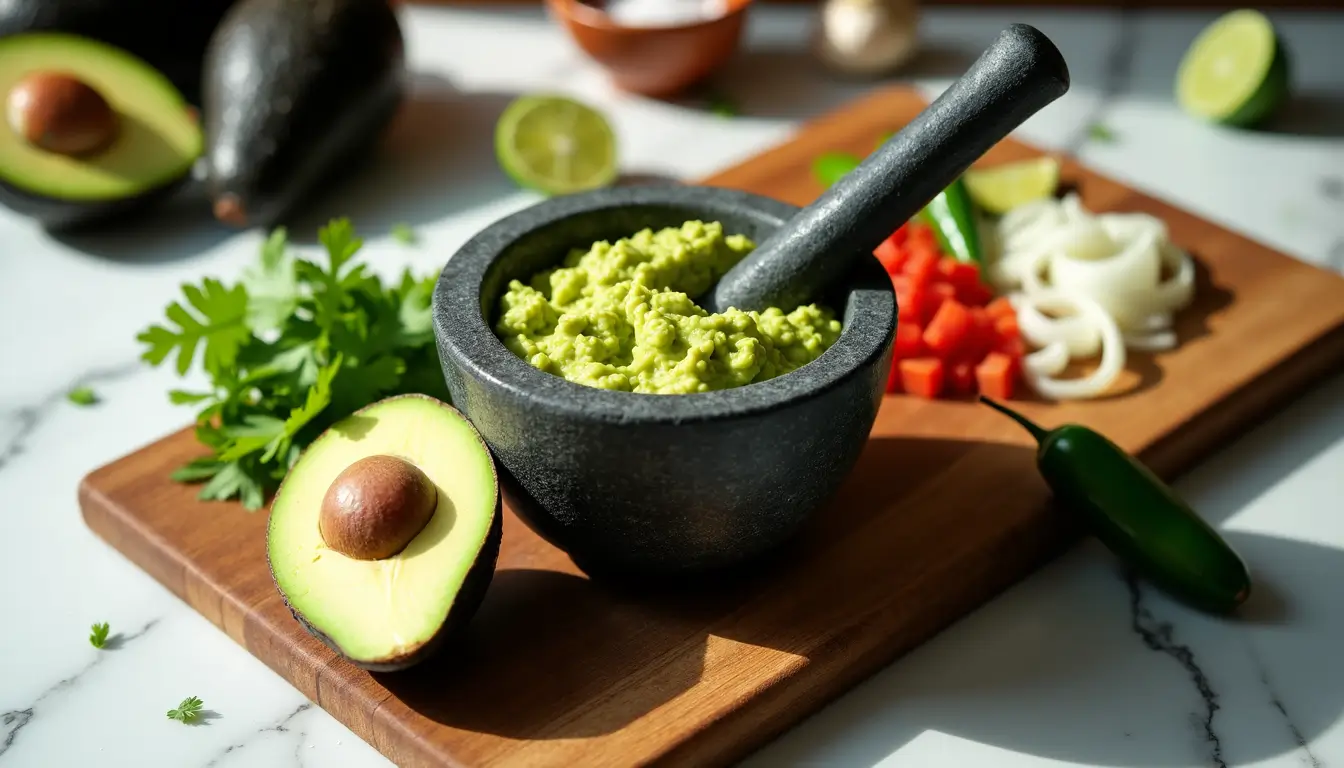Would you believe authentic guacamole recipe needs just eight simple ingredients to make the best recipe you’ve ever tasted?
Making restaurant-quality guacamole goes beyond mashing avocados. This versatile Mexican dip takes only 10 minutes to prepare and works perfectly for casual snacks and fancy gatherings alike. The possibilities are endless – from taco toppings to burger spreads, or simply paired with tortilla chips the traditional way.
Your homemade guacamole recipe can go from good to exceptional with the right technique. Professional chefs have shared their secrets to help raise your guacamole game. The perfect ripeness of avocados and ideal texture make all the difference between an ordinary dip and a memorable Mexican masterpiece. Let’s take a closer look at these game-changing tips!
Table of Contents
Essential Ingredients for Perfect Guacamole recipe
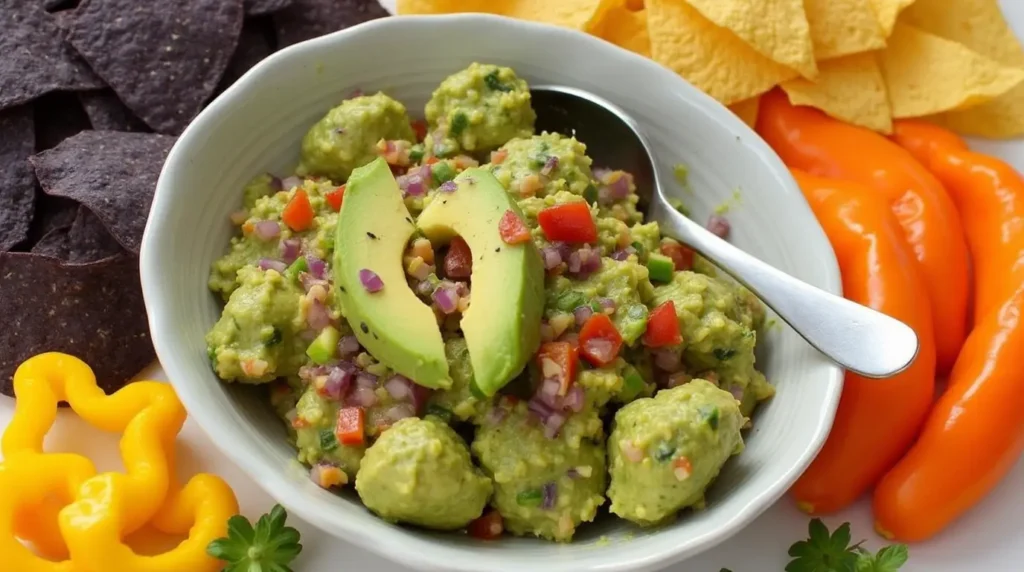
The best guacamole recipe starts with premium ingredients. You’ll need ripe avocados, fresh lime juice, salt, onions, tomatoes, cilantro, jalapeños, and garlic to create the perfect base.
How to Pick Ripe Avocados
The perfect avocado selection depends on three things: color, texture, and firmness. Look for avocados that range from dark green to almost black. The skin should feel slightly bumpy instead of smooth. The quickest way to test firmness is to gently press the avocado in your palm – it should give slightly without feeling mushy.
Expert chefs test ripeness by checking under the stem. The avocado is ready to use if the stem pops off easily and shows green underneath. Brown spots under the stem usually mean the avocado’s insides have turned brown.
Fresh vs Processed Ingredients
Fresh ingredients make much better guacamole. Store-bought processed guacamoles often contain added acids like citric or ascorbic acid to last longer. Fresh lime juice is a must because jarred versions just don’t taste the same.
The best ingredients include:
- Roma tomatoes (less juicy variety)
- Yellow or white onions (traditional Mexican choice)
- Fresh cilantro
- Fresh jalapeños or serrano peppers
- Whole garlic cloves
Regional Mexican Variations
Each Mexican region creates guacamole with its own special touch. The Yucatan Peninsula makes their version with habanero peppers and Hall avocados, which creates a thinner consistency. Michoacán’s style, “Guacamole de la Abuela” (Grandmother’s guacamole), features a smoother texture and deeper flavors.
Puebla’s version stands out with its signature garlic taste. Oaxacan guacamole flows thinner and works better as a condiment. Veracruz takes a unique approach by mixing in cooked ingredients.
Chef’s Guide to Prep Techniques
Professional chefs know that becoming skilled at proper cutting and preparation techniques can turn a simple guacamole recipe into an exceptional dish.
Proper Avocado Cutting Method
You should place the avocado on a stable cutting board and create a lengthwise incision that stops at the pit. Rotate the avocado gently with the knife in position. Follow the pit’s curve until you complete a circle.
These chef-approved steps will help you remove the pit safely:
- Twist the halved avocado firmly to separate
- Hold the half containing the pit securely
- Carefully strike the pit with a chef’s knife
- Rotate the knife gently to release the pit
- Remove the pit using the edge of a cutting board
Ingredient Size and Texture Control
We recommend scoring the avocado flesh in a grid pattern while it’s still in the skin before scooping. This ensures uniform pieces. Professional kitchens use specific tools to control texture perfectly. A whisk creates an ideal blend of smooth and chunky textures. A molcajete (traditional volcanic stone mortar) gives you a uniquely rustic consistency.
Dice tomatoes and fold them in last to prevent a murky brown appearance. Onions need fine mincing or a quick rinse to remove harsh flavors.
Restaurant kitchens have a vital technique of preparing aromatics separately. Mix onions, cilantro, and chilies in a separate bowl before adding them to the avocado. This minimizes handling of the avocado flesh and gives you better texture control.
The finished guacamole recipe should display two distinct shades of avocado flesh, so don’t over-mash it. Professional chefs aim for a “whipped butter consistency” while keeping some chunks to make it interesting.
Professional Mixing Methods
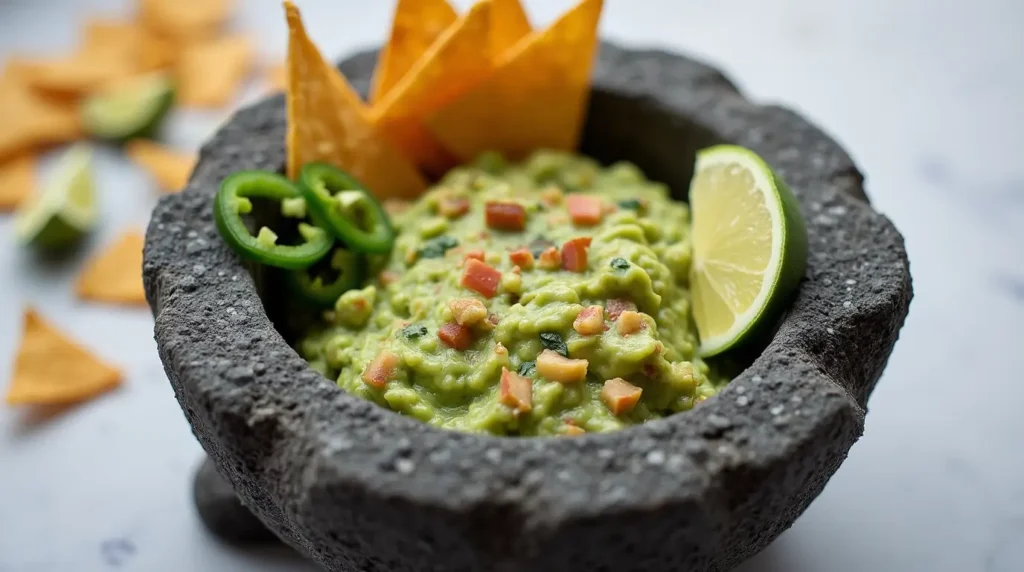
The difference between average homemade guacamole recipe and a chef’s masterpiece lies in how you mix it. Professional chefs use several techniques that bring out unique textures and flavors in different ways.
Traditional Molcajete Technique
The molcajete, a traditional volcanic rock mortar, is the life-blood of authentic Mexican guacamole recipe making. Its rough surface releases oils from ingredients and creates a rustic texture. The stone’s abrasive nature breaks down ingredients better and infuses more flavor into each bite.
The best way to use a molcajete starts with grinding aromatics into a paste. Mix onions, jalapeños, and cilantro with salt, then grind them with the pestle to create a concentrated flavor base. Mexican kitchens have used this method for centuries.
Modern Kitchen Tools
Modern kitchen tools are a great way to get excellent results. Here are the quickest ways to make amazing guacamole recipe:
- Food Processor: Makes smooth guacamole with precise control through pulse settings
- Immersion Blender: Lets you adjust texture from chunky to creamy
- Whisk: Creates the perfect blend of smooth and chunky textures
Achieving Ideal Consistency
Professional chefs look for specific texture profiles in their guacamole recipe. Chef Rodarte suggests a “whipped butter consistency” that creates a creamy base with some texture. Here’s how to get it right:
The mixing order makes all the difference. Mash avocados with seasonings until creamy, then fold in other ingredients. This prevents the mixture from becoming watery. If you’re using modern tools, use short pulses and scrape down the sides to keep the texture just right.
A fork works great if you don’t have a molcajete. Just mash and turn the bowl slowly to spread ingredients evenly without overdoing it.
Room temperature ingredients are vital for the perfect consistency. Cold ingredients can make the mixing uneven and change the texture.
Common Mistakes to Avoid
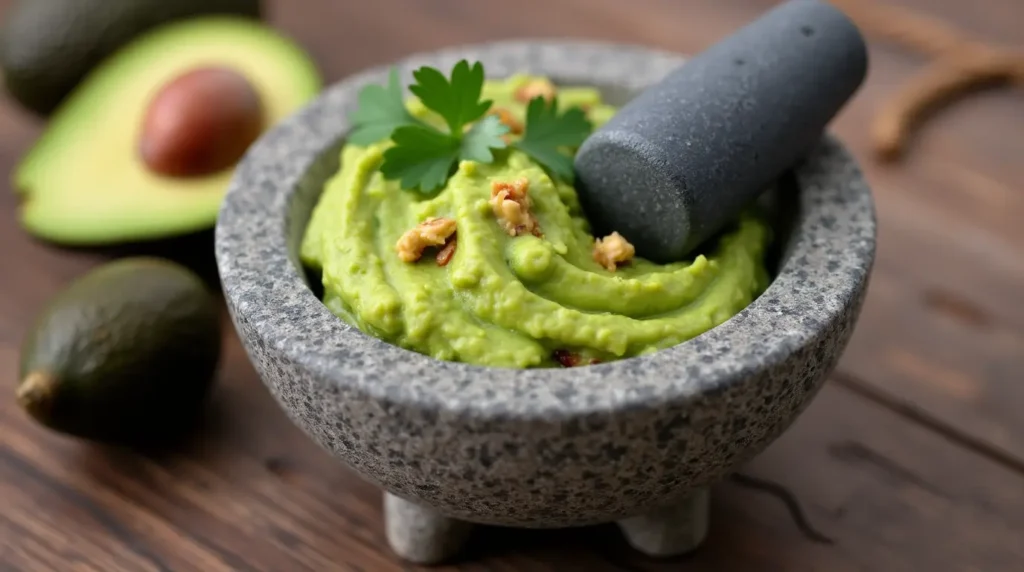
The perfect guacamole recipe depends on avoiding mistakes that can affect its taste and looks. You’ll get authentic Mexican flavors and great results by understanding what not to do.
Temperature Control Issues
The right temperature is vital when making guacamole recipe. We learned that wrong temperatures will make your guacamole oxidize quickly, turning its beautiful green color to an unappealing brown. The brown guacamole is still safe to eat, but it won’t look appetizing.
To get the best results:
- Keep ingredients at room temperature during preparation
- Serve within two hours of making
- Store in airtight containers if needed
Seasoning Errors
The right balance of seasonings can turn average guacamole into something exceptional. Chefs suggest using one teaspoon of kosher salt for every three avocados. The right amount of lime juice – about two tablespoons per large avocado – brings out the flavors and helps keep that bright green color.
Watch out for these seasoning mistakes:
- Not enough salt dulls the flavors
- Too much lime juice makes it watery
- Forgetting about the salt in tortilla chips
Texture Problems
Bad ingredient prep and mixing techniques can ruin your guacamole’s texture. Here’s how to get the perfect consistency:
Using Florida avocados instead of Hass varieties will make your guacamole recipe watery because they have more water content. Mashing too much turns it into an unpleasant puree.
Tips for the right texture:
- Skip the food processor – it makes baby-food texture
- Keep some avocado chunks for authentic feel
- Cut tomatoes into ¼-inch pieces to control moisture
Chefs say good guacamole recipe should feel like whipped butter but with some chunks for interest. Too much mashing releases liquid and makes it runny.
The size of your ingredients makes a big difference. Dice onions to corn kernel size to avoid overwhelming bites. Careful tomato prep stops excess moisture. Your ingredient preparation technique will determine your guacamole’s final texture.
Storage and Presentation Tips
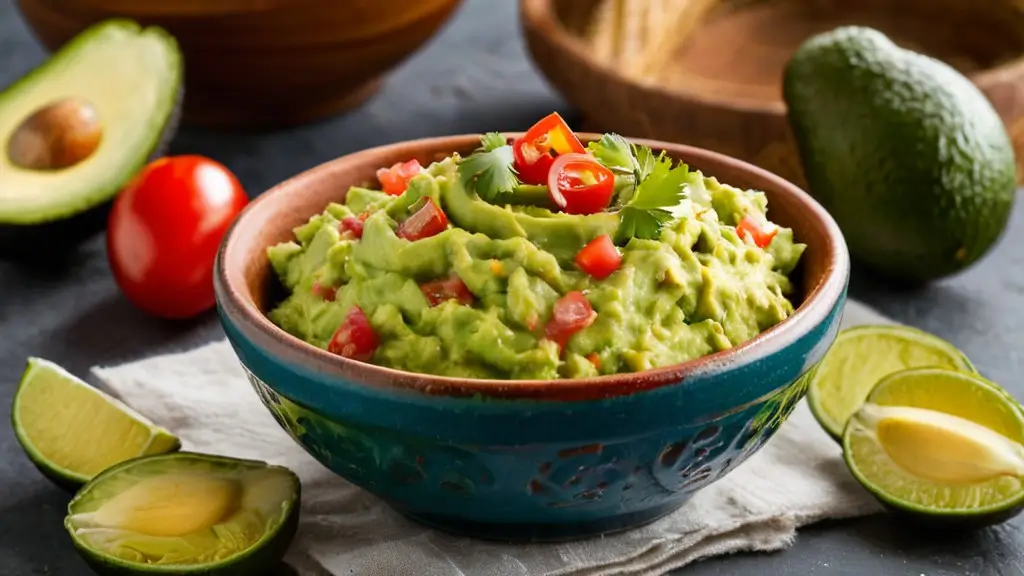
Your homemade guacamole recipe needs proper storage techniques and creative presentation methods to keep its bright green color and fresh taste.
Professional Preservation Methods
The water method works best to keep guacamole recipe fresh. Put the guacamole in an airtight container and smooth the surface with a spoon to remove air pockets. We added lukewarm water until it covers the surface by about half an inch. This method keeps guacamole fresh up to three days in the refrigerator.
Some people prefer different approaches. A thin layer of milk creates a good barrier against oxidation. Extra lime juice also helps – about two tablespoons for each large avocado. This approach keeps the bright green color and maintains freshness at room temperature for hours.
Professional kitchens often use multiple preservation layers to get the best results:
- Press plastic wrap directly onto the guacamole surface
- Add a thin layer of lime juice or water
- Seal with an airtight lid
- Store in the refrigerator
Temperature control is a vital part of preservation. The guacamole recipe needs to go in the refrigerator right after preparation with your chosen preservation method. Take out any preservation liquid before serving, then stir gently to mix in any extra moisture.
Restaurant-Style Serving Ideas
The right presentation can turn your best guacamole recipe from a casual dip into an impressive appetizer. Restaurant chefs serve guacamole recipe in creative containers that match the dining experience. Large margarita glasses make stunning centerpieces at parties and are now gaining popularity in upscale establishments.
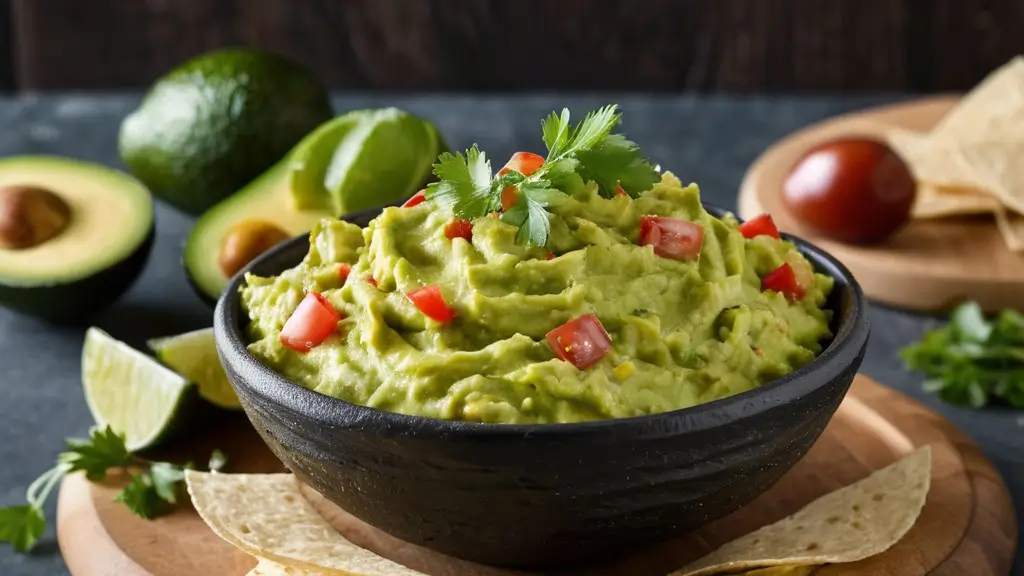
These professional serving suggestions work well for elegant entertaining:
- Individual cocktail glasses for personalized portions
- Copper Moscow mule mugs for themed presentations
- Martini glasses for sophisticated appetizer service
Professional chefs suggest garnishing with fresh ingredients to improve visual appeal. A sprinkle of cotija cheese on top adds flavor depth and visual contrast. Grilled green onions bring both beauty and complex flavors to the dish.
Proper temperature control matters at parties and gatherings. Place serving vessels on ice to keep both appearance and texture perfect. Buffet-style service works better with smaller portions in multiple serving vessels instead of one large bowl. This approach helps manage temperature and keeps the presentation fresh throughout the event.
Conclusion
Creating restaurant-quality guacamole demands precision – from picking ripe avocados to mastering preparation techniques. Fresh ingredients are the life-blood of exceptional guacamole recipe. Professional mixing methods ensure perfect texture and flavor development.
Expert chefs know that temperature control and proper seasoning make the difference between average and outstanding results. Their proven preservation techniques help maintain the vibrant green color and fresh taste that makes the best guacamole recipe stand out.
These chef-approved tips and techniques will help you create authentic Mexican guacamole recipe that matches any restaurant version. Each batch gives you a chance to perfect your technique and adjust seasonings to your preference. You can find more delicious recipes and cooking ideas at recipesnutritious.com.
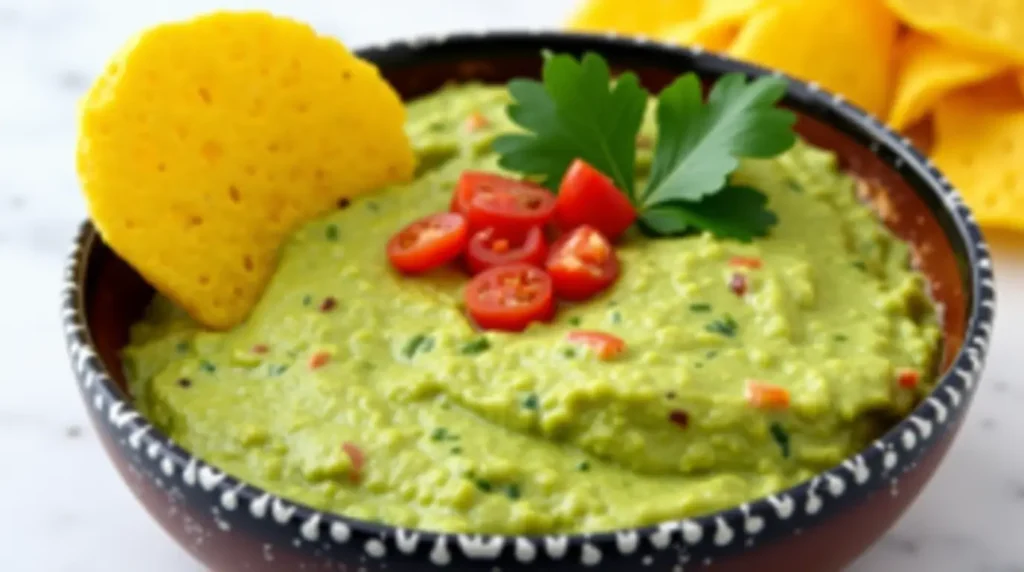
Your creativity can shine through presentation. Serve it in elegant cocktail glasses for special occasions or casual bowls for family gatherings. This homemade guacamole recipe will definitely become everyone’s favorite at your next gathering.
FAQs
Q1. What’s the key to making exceptional guacamole? The secret lies in using fresh, high-quality ingredients, particularly ripe Hass avocados. Proper seasoning with salt and lime juice is crucial, as is achieving the right texture through careful mashing. Avoid over-processing to maintain some chunkiness.
Q2. How can I prevent my guacamole from turning brown? To keep guacamole fresh and green, use plenty of lime juice, which acts as a natural preservative. For storage, cover the surface with a thin layer of water or milk in an airtight container before refrigerating. Remove the liquid and stir gently before serving.
Q3. What’s the best way to achieve the ideal guacamole consistency? Aim for a “whipped butter consistency” with some chunks for texture. Use a fork or a molcajete (traditional stone mortar) to mash the avocados, and fold in other ingredients gently. Avoid using a food processor, which can make the guacamole too smooth.
Q4. Are there any regional variations in Mexican guacamole? Yes, different regions in Mexico have their own guacamole styles. For example, Yucatan uses habanero peppers for a spicier version, while Michoacán’s “Guacamole de la Abuela” has a smoother texture. Puebla incorporates garlic, and Veracruz includes cooked ingredients.
Q5. How should I serve guacamole for a more impressive presentation? For an elegant presentation, consider serving guacamole in creative vessels like large margarita glasses, copper Moscow mule mugs, or individual cocktail glasses. Garnish with fresh ingredients like cotija cheese or grilled green onions for added visual appeal and flavor complexity.

